Visionary Early Works by the Famed Expressionist Bring New Excitement

Youthful Fritz Lang
German director Fritz Lang led a life of danger.
At least, that’s the way he told it. Longtime film buffs may be familiar with the legends Lang spun of how he narrowly escaped Hitler’s efforts to reel him in as a top propaganda maker for the Third Reich.
While historians and even Lang biographers have taken his running-against-the-clock version of the story apart (essentially, “The night Goebbels made the offer, I was on the first train to Paris!”), the fact remains that the great director fled at the right time. His wife and greatest creative partner, the writer Thea von Harbou had gone over to fascism, eventually joining the Nazi party. Lang, already something of a vagabond, had by then divorced her.
Leading up to all of this, it’s interesting to note the ominous tone of Lang and his fellow filmmakers at Germany’s UFA studios, a leading force in cinema in the 1920s. The expressionist output of UFA and others were rife with foreshadowing of the world horrors to come, mixed with dark post-World War I ruminations. It was the Weimar era, the national calm before the storm of their own making.
Yet, death was lurking, looming in both memory and things to come. In the true vain of an artist in tune with the creeping winds of change, Lang set out to tell an all too appropriate tale: one of “The Weary Death” (a variant title of the film discussed immediately below). He teamed with von Harbou for their third time to craft the starkly visionary effects-laden lamentation thriller, Destiny.
*****
Destiny
DIRECTED BY FRITZ LANG/GERMAN/1921
STREET DATE: AUGUST 30, 2016/KINO CLASSICS
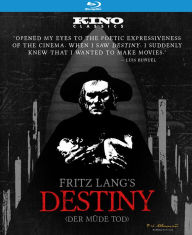 Destiny dropped in 1921, routing Lang’s career trajectory away from the potboiling adventure yarns he’d found early success with, and into a more deeply felt direction. Adventure would surely persist in his work, but largely in the service of other themes and ideas, sometimes brazen ones.
Destiny dropped in 1921, routing Lang’s career trajectory away from the potboiling adventure yarns he’d found early success with, and into a more deeply felt direction. Adventure would surely persist in his work, but largely in the service of other themes and ideas, sometimes brazen ones.
Destiny is a deliciously odd serving of unhinged expressionist vision. Amid the trademark arched doorways – always pitching to cathedral points – as well as the vivid phantasmagorical color tintings, is a tale of love untethered across time and place. It is philosophical picture that is also perhaps the greatest visual effects film of its day. Flying carpets, scale gags, inhuman transformations, and far more occur in Destiny’s sleek 98 minute running time. The result is a taut and uncanny work that blew the young minds of Alfred Hitchcock and Luis Bunuel.
The film tells the story of a woman’s desperate struggle against the familiar inevitable end which all mortals must face. Death himself (the amazing presence of Bernhard Goetzke) brings her (Lil Dagover) into his eerily cool candle chamber, where she talks him into a bargain for the soul of her beloved. She caught the soul-weary Death on a generous day, in which he’s willing to make the following deal: If she can save but one of the three lives of a different doomed young man from history, her lover will be spared.
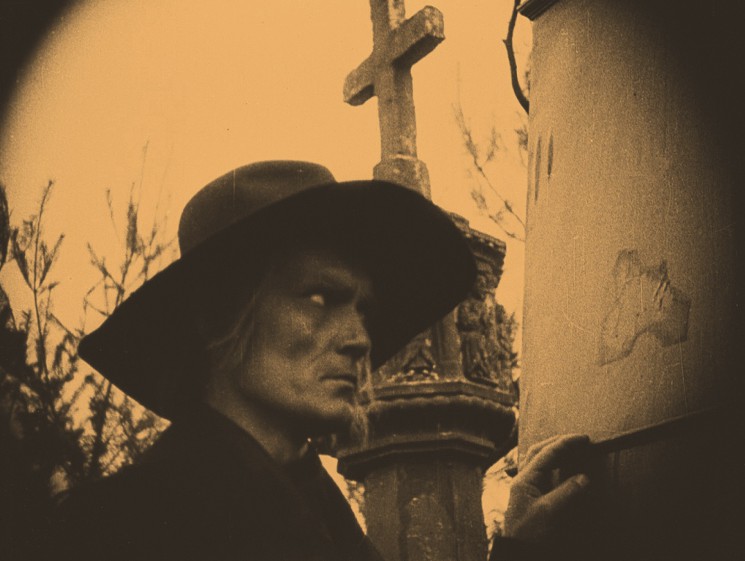
Bernhard Goetzke as Death struggles to do “the Lord’s work”.
From this point, Destiny plays out as a diverse anthology, a “folk song” in six “verses”. Each “verse” is the film shifting wildly in appearance, time and place. The bookending sequences are a modern-day village, then the action shifts to Persia for an Arab-themed adventure. The second attempt takes our heroine to the middle of love triangle in Venice, and finally, she quantum leaps to Imperial China, where the demanding, clawed Emperor cannot be appeased by mere magic – only her charms will do. Each time, she, her lover, and others are portrayed by already established actors from the opening framework, Wizard of Oz style.
Flying carpets, scale gags, inhuman transformations, and far more occur in Destiny’s sleek 98 minute running time. The result is a taut and uncanny work that blew the young minds of Alfred Hitchcock and Luis Bunuel.
Lang’s Catholic past illuminates the entire fairy tale proceedings. From the opening proclamation of “Praise the Lord!” to the use of a Song of Solomon 8:6, which says “Set me as a seal upon thine heart, as a seal upon thine arm: for love is strong as death; jealousy is cruel as the grave: the coals thereof are coals of fire, which hath a most vehement flame.” Death, the grave, and even fire are things that Germans knew all too well. But would anyone in post WWI Germany, even Lang, honestly believe that love is as strong as death? This is the very question that Destiny grapples with.

The ad copy for this 2016 restoration and re-issue of Destiny calls it “Fritz Lang’s first masterpiece”. While the film is undeniable as a tremendous cinematic achievement, the proclamation of “masterpiece” seems a too-loose application of the term. The new blu-ray nonetheless displays the full-on love and attention granted this fine and important piece of work, courtesy of the F.W. Murnau-Siftung organization. Among the disc’s extras is a restoration demonstration, detailing just how much effort went into this new 2K presentation: stabilization, scratch removal, color work, and more. Yet, vitally, the film retains it’s 1921 patina. This is one blu-ray that silent film buffs will definitely not want to be without.
Would anyone in post WWI Germany, even Lang, honestly believe that love is as strong as death? This is the very question that Destiny grapples with.
Rounding out its special features is an audio commentary by film historian and Video Watchdog publisher Tim Lucas. Lucas offers an academic approach, having clearly done his homework. He talks through the production details and talent filmographies of key players on and off screen, resulting in a sheer wealth of information. A newly composed score by Cornelius Schwehr, performed by the 70-piece Berlin Rundfunk Symphony Orchestra, accompanies the film. The score, lacking the expressionist zing of Lang’s vision, is a rare disappointment in an otherwise terrific package.
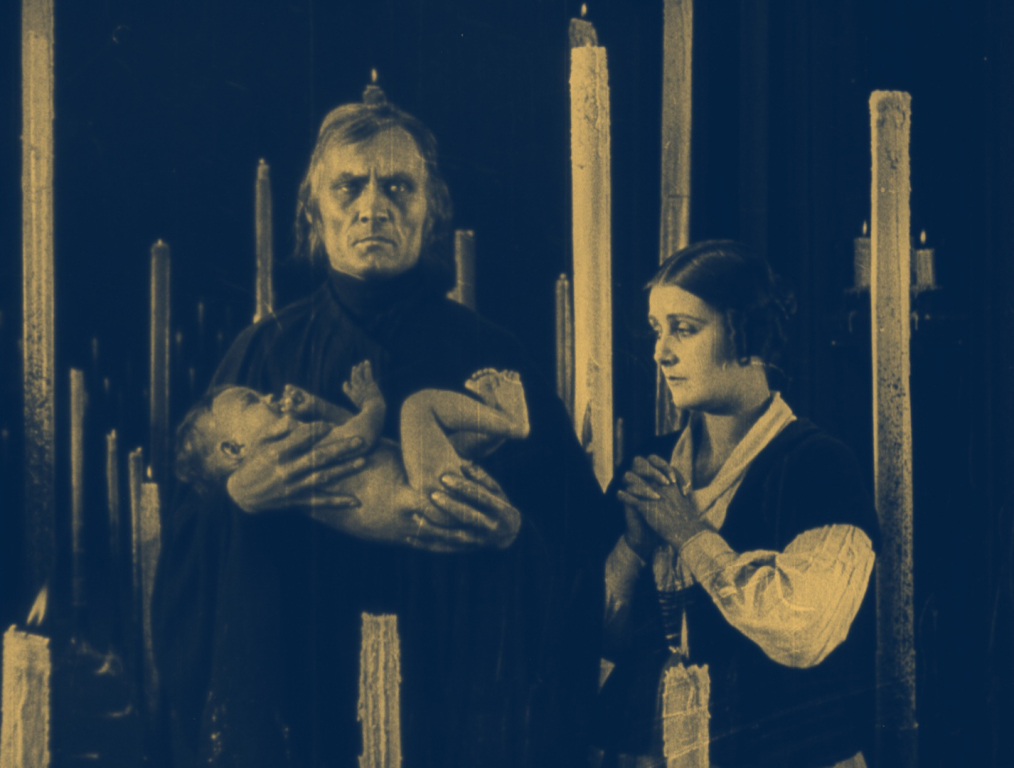
*****
The Spiders
DIRECTED BY FRITZ LANG/GERMAN/1919, 1920
STREET DATE: AUGUST 23, 2016/KINO CLASSICS
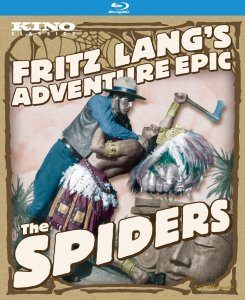 Shortly preceding Destiny in Fritz Lang’s filmography is the two-part adventure series, The Spiders. Consisting of an hour-long first film, 1919’s The Golden Lake, and a 104 minutes second film, The Diamond Ship (1920), The Spiders films are a one-two punch of non-stop international intrigue, villainous dealings, and exotic and clandestine locales. Both films follow the travails of adventurer Kay Hoog (an intense Carl de Vogt) as he first stumbles upon, then takes on the nefarious dealing of an underground crime syndicate known as “The Spiders”.
Shortly preceding Destiny in Fritz Lang’s filmography is the two-part adventure series, The Spiders. Consisting of an hour-long first film, 1919’s The Golden Lake, and a 104 minutes second film, The Diamond Ship (1920), The Spiders films are a one-two punch of non-stop international intrigue, villainous dealings, and exotic and clandestine locales. Both films follow the travails of adventurer Kay Hoog (an intense Carl de Vogt) as he first stumbles upon, then takes on the nefarious dealing of an underground crime syndicate known as “The Spiders”.
Led by the decidedly butch and sinister Lio Sha (Ressel Orla), and consisting of everything from dapper thieves to Asian swordsmen, The Spiders are known for its ominous calling card, a fist-sized metal spider left on the bodies of its victims. The Golden Lake is a rip-roaring cat-and-mouse caper set in the ancient ruins of a secretly still-active Incan temple. It sets the stage for The Diamond Ship, which once again pitting the valiant, vendetta wielding Hoog against Sha and company in a desperate search for a legendary Buddha shaped diamond that is said to grant it’s weirder control over all of Asia.
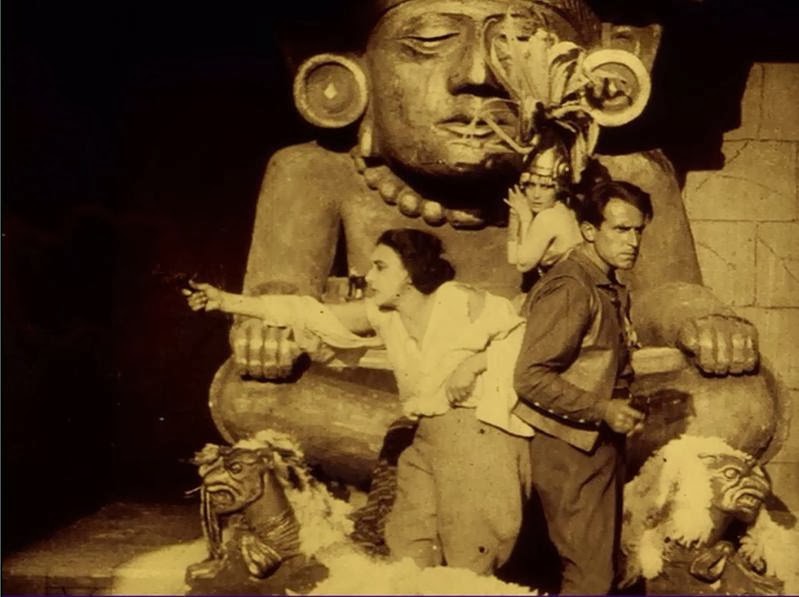
Ressel Orla and Carl de Vogt in THE SPIDERS, PART ONE: THE GOLDEN SEA.
1919’s The Golden Lake being Lang’s only third film, displaying satisfying pacing, craftsmanship and imagination, yields no surprise that the filmmaker went on to have the major career that he did. The more conventionally feature-length The Diamond Ship leaves no doubt that Lang is right at home in this world of gadgets, secret passages, underground cities, espionage, wealth, exploration, trap doors, mythic artifacts and good versus evil. While their scope is less than that of his super-productions to follow (1927’s Metropolis was the biggest film ever made when it came out), it is a telling primer for his larger, more polished adventure epics to come. (The two Die Nibelungen films (1924), as well as his Dr. Mabuse films.)
The Spiders films are a one-two punch of non-stop international intrigue, villainous dealings, and exotic and clandestine locales.
Kino Classics’ newly released blu-ray of The Spiders offers both films on one disc, separated into two independent programs. There is, unfortunately, no bonus content, but it is nonetheless fantastic to have these early-career Fritz Lang romps available in satisfying high definition. Ben Model’s 2012 musical score is purposed for this release, and proves wholly utilitarian. Considering that these films are 96+ years old, recent restoration attempts can only do so much to salvage these treasures from the ravages of time. (The Spiders has apparently not recieved the royal treatment that Destiny has.) But, only during the “red caves” finale of The Diamond Ship does the digital transfer become occasional challenging, due entirely to the sequences’ garish bright red tinting. All in all, these films look and sound great.
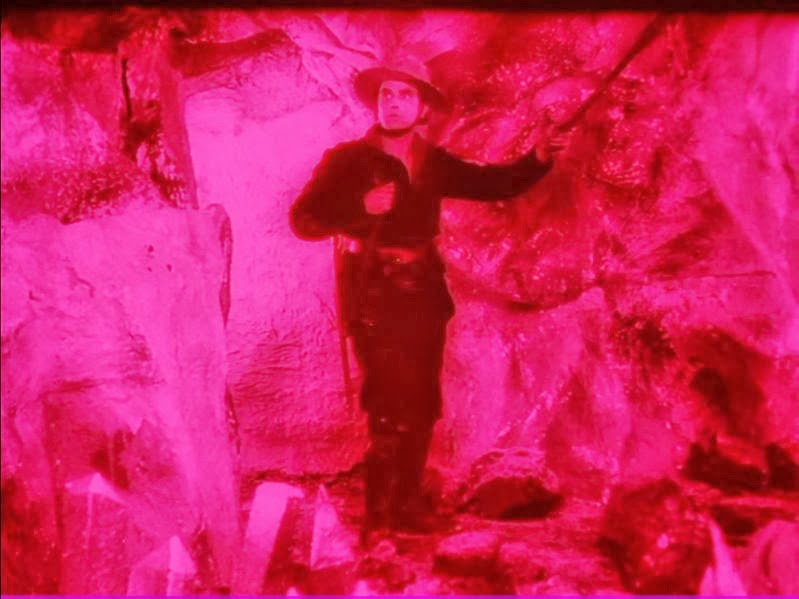
The red caves of THE SPIDER, PART TWO: THE DIAMOND SHIP.
*****
Fritz Lang went on to Hollywood where he would have a fruitful directorial career working in many genres and styles, including crime, Westerns, and thrillers and most notably, Film Noir – several of which it could be argued that he helped initially forge via his silent era German work. Although his expressionist silent work comprises only a fraction of his varied international career, it is, first, foremost, and rightfully, what Lang will always be remembered for. Yet, keeping our global silent film history alive is a task proving increasingly niche and always challenging in nature. Many kudos and great credit must be given to the F.W. Murnau-Stiftung organization, Kino Lorber, and the many others who persist in making sure that the adventurous, cinematically pioneering spirit of Fritz Lang lives on, and remains available for discovery.
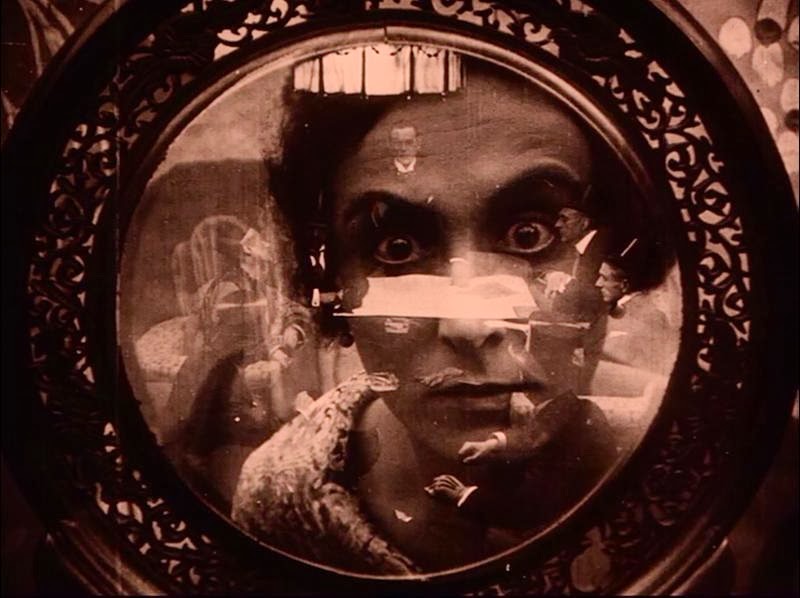
The images and promotional material used in the review are present only as a reference to the film and are not meant to reflect the actual image quality or content of the Blu-ray.

